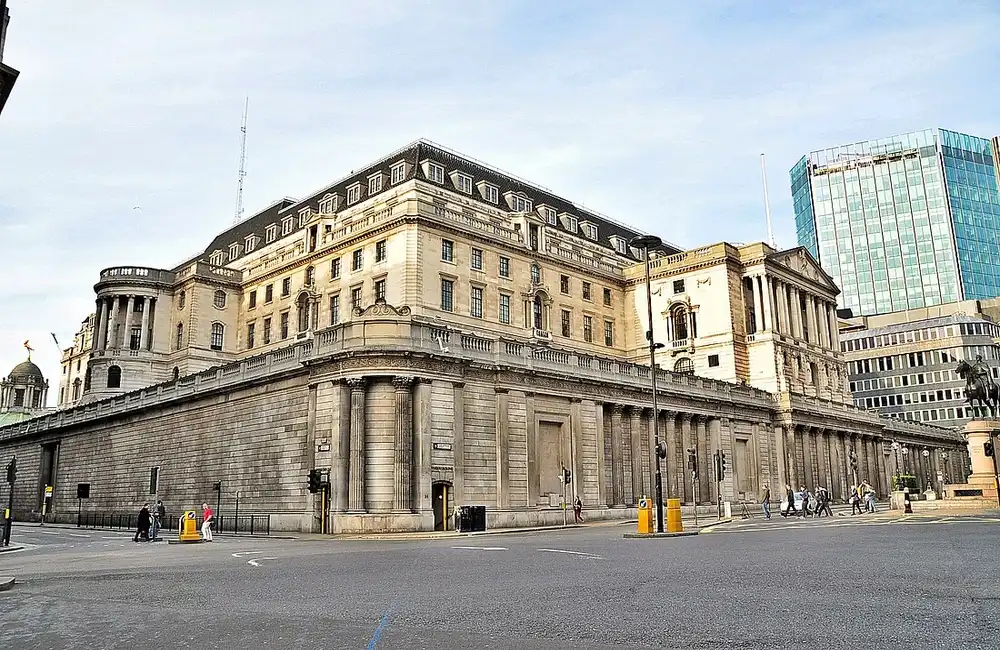The Bank of England (BoE) is a key player in shaping the UK economy, and its decisions on interest rates greatly influence various financial markets, including the bond market.
When the Bank of England (BoE) revises interest rates, the ripple effects are felt across the UK economy. For bond investors, even the smallest rate cut can have significant implications, shaping both risks and opportunities in the fixed-income market. Whether you're a seasoned investor or new to bonds, understanding how BoE rate cuts interact with bond yields and valuations is crucial to making informed decisions.
What Are BoE Rate Cuts?
A rate cut occurs when the Bank of England lowers its base interest rate, the benchmark that influences the cost of borrowing and saving across the UK. These cuts are typically made during periods of economic slowdown, when the BoE aims to stimulate the economy by making borrowing cheaper and encouraging spending and investment.
Why the BoE Cuts Rates
- Encouraging Economic Growth: Lower rates boost consumer spending and business investment.
- Managing Inflation: If inflation is below the BoE’s target (typically 2%), a rate cut can help bring it closer by spurring activity.
- Supporting Employment: Cheaper borrowing enables businesses to expand, potentially creating more jobs.
While these actions benefit the broader economy, they also have distinct effects on financial markets, particularly the bond market.
BoE Rate Cuts and Bond Prices
For UK bond investors, the relationship between interest rates and bond prices is one of the most critical dynamics to understand.
The Basics of Interest Rates and Bond Prices
When interest rates fall, new bonds are issued with lower yields. This makes existing bonds with higher coupon rates more attractive, resulting in an increase in their price in the secondary market. Simply put, as rates go down, bond prices go up.
Duration Matters
This effect is more pronounced with bonds that have longer maturities or durations. Long-dated UK gilts, for instance, are highly sensitive to interest rate changes. Investors holding these types of bonds when rates fall often see a considerable rise in the value of their holdings.
Yield Curve Impacts
Rate cuts are also likely to steepen the yield curve, where long-term bonds offer higher yields compared to short-term ones. This can present opportunities for investors targeting long-term gilts or other fixed-income securities.
Opportunities for UK Bond Investors
BoE rate cuts are often viewed as a tailwind for bond investors, but capitalising on the benefits requires a strategic approach. Here are some key opportunities to consider:
- Capital Appreciation: Selling higher-yielding existing bonds after price gains.
- Diversification: Using bonds as a safe haven during equity market volatility.
- Sector Opportunities: Exploring infrastructure and utility bonds sensitive to rate shifts.
- Corporate Bonds: Shifting to investment-grade corporate bonds when gilt yields drop.
Risks to Consider
- Reinvestment Risk: Lower yields on new issues.
- Inflation Concerns: Rising inflation eroding real bond returns.
- Short-Term Volatility: Market fluctuations following unexpected rate moves.
How to Position Your Portfolio
Navigating a rate-cut environment as a bond investor requires careful planning and a solid strategy. Here are some tips to consider:
- Focus on Duration: Balance long- and short-duration holdings to manage risk.
- Consider Active Bond Funds: Leverage professional management to respond to rate changes.
- Build a Barbell Strategy: Combine short-term and long-term bonds for stability and gains.
- Explore Corporate Bonds: Seek higher yields from high-quality corporate issuers.
The Bigger Picture
BoE rate cuts can be a boon to UK bond investors, offering opportunities for capital appreciation and diversification. By understanding how interest rate changes impact bond markets, you can make informed decisions to optimise your portfolio. However, it’s crucial to recognise that not all bonds or strategies are created equal. The key to navigating a rate-cut environment is to stay informed, balance risk and reward, and align your investments with your broader financial goals.
Need Expert Guidance?
If you're unsure how to take advantage of the current interest rate environment, consider seeking advice from a financial professional. A well-considered strategy can make all the difference in turning economic changes into opportunities. Contact us today to learn how we can help align your investment strategy with your goals.



















